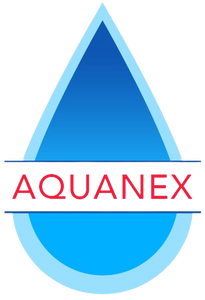Widespread Water Use
It takes approximately 1.5 gallons of water to produce one liter of beer, 2.5 gallons to rinse one silicon chip, 2,000 gallons to build an automobile or 3,000 gallons to produce one ton of steel (http://www.treehugger.com/clean-technology/how-many-gallons-of-water-does-it-take-to-make.html). The efficient use, waste treatment, reuse, or safe release of water to a municipality, or the environment, directly impacts the profit and revenue potential of industrial manufacturers.
Contaminated water is generated at hundreds of thousands of locations, and either treated on site or hauled to licensed waste treatment facilities.
Regulation of Industrial Water Use and Wastewater
There is strong awareness in developed and developing countries that clean water is critical to human health, environmental soundness and economic vitality. Regulations differ in detail throughout the world, but all have the fundamental feature of prohibiting discharge of contaminated water. In most countries, these regulations are well-established and require water to be treated so it meets low contamination levels for discharge. These discharge limits and penalties for non-compliance form the economic basis for the costly treatment of contaminated water.
In the US, the Clean Water Act (CWA) (https://www.epa.gov/laws-regulations/summary-clean-water-act) of 1977 is the primary federal law governing water pollution. Its objective is to restore and maintain the integrity of the nation’s waters by preventing point and nonpoint pollution sources. The Resource Conservation and Recovery Act (called RCRA or “Rickra”) (https://www.epa.gov/aboutepa/epa-history-resource-conservation-and-recovery-act), enacted in 1976, is the principal federal law governing the disposal of solid waste and hazardous waste. This large body of regulations is administered by the U.S. Environmental Protection Agency (EPA) (https://www3.epa.gov/).
Industrial Water Treatment Overview
Contaminated water is typically subjected to a “treatment train” where various technologies are used to remove contaminants. These treatment trains use basic methods to remove bulk contaminants, such as filters to remove particles and settling tanks to separate free products. Each subsequent process step is more challenging and costly. Final processes are used to “polish” the water and bring the contamination below regulated discharge limits.
Whether water is treated on site or hauled away to a licensed facility, the treatment process is similar and results in contaminant-laden media that must be disposed of according to strict regulations.
All shipments – of water or media – are required to be documented by manifests that become public record. If more than a small amount is transported annually, the generating facility becomes an EPA Large Quantity Generator (LQG) (https://www.epa.gov/hwgenerators/categories-hazardous-waste-generators#lqg) and must submit detailed annual reports.
Many technologies exist for treating water with dissolved organic contaminants (http://www.gewater.com/handbook/wastewater_gas_cleaning_systems/ch_37_treatment.jsp), but absorbents are by far the most widely used. How and where various treatment technologies are applied depends on the water contamination, volume and treatment goals.
Adsorbents have been in use for decades and there are many types: activated carbon, zeolites, polymers, clays and other materials that absorb contaminants from water (http://www.nature.com/nprot/journal/v1/n6/abs/nprot.2006.370.html). Treatment systems are typically simple, but large. Capital cost is modest. Medias must be exchanged, transported and disposed of, so operating costs can be substantial.
Advanced Oxidation Processes (http://www.nwri-usa.org/pdfs/TTChapter3AOPs.pdf) are relatively new and use a strong oxidizer to destroy organics in a water stream. The oxidizer can be continuously added chemicals, or generated using ozone, UV light or other methods. The advantage is being able to destroy a wide range of contaminants. Disadvantages are possible possible by-products, high equipment cost and high operating cost (chemical purchases, energy, or both).

